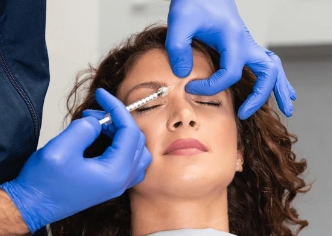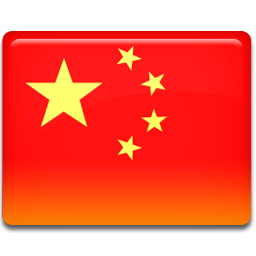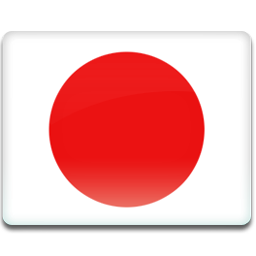Overview of luer lock syringe Manufacturing
The production process for Luer Lock syringes is a highly specialized operation, requiring precision, quality control, and efficient use of technology. These syringes are an essential component in the medical field due to their ability to securely attach needles, ensuring safe and effective drug delivery. As the demand for Luer Lock syringes has increased, manufacturers have optimized their production processes to meet quality standards while maintaining cost efficiency. This article delves into the intricate manufacturing process, highlighting key stages and considerations for factories and suppliers.
Raw Materials Used in Production
Selection of High-Quality Polymers
The primary raw materials for producing Luer Lock syringes are various technical polymers, such as cyclic olefin copolymer (COC) and cyclic olefin polymer (COP). These materials are favored for their chemical stability, clarity, and strength. The choice of polymer impacts the syringe's durability, pH neutrality, and design flexibility. Manufacturers carefully select suppliers who can provide consistent quality and the required specifications to ensure the final product's performance.
Additional Materials and Components
Additional materials include polypropylene for the barrel and plunger, stainless steel for the needle, silicone lubricant for easy plunger movement, and ethylene oxide for sterilization. Packaging materials are also essential, as they protect the syringes during transportation and storage.
Injection Molding Process
Precision in Molding Technology
Injection molding is a critical phase in the production of Luer Lock syringes. The process involves melting the polymer and injecting it into a mold to form the syringe components. Advanced machines with multi-cavity molds enhance efficiency by allowing multiple parts to be produced simultaneously. Cycle times range from 15 to 17 seconds, enabling factories to produce up to 3,840 parts per hour under optimal conditions.
Maintaining Mold Integrity
Continuous monitoring and maintenance of injection molds are vital to ensure precision and minimize defects. Any irregularities in the mold can lead to defective products, which must be avoided at all costs. Factories employ skilled technicians to oversee this process and perform regular mold inspections and cleaning.
Assembling Components of Luer Lock Syringes
Automation in Assembly
The assembly of syringe components is another critical step, where automation plays a significant role in enhancing efficiency and consistency. Machines assemble the plunger, barrel, and needle into a complete syringe using precision robotics. This automation reduces the risk of human error and increases production speed.
Ensuring Strong Luer Lock Connections
The Luer Lock mechanism requires exact alignment and fitting to ensure the syringe's secure attachment to needles. Automated systems enable precise threading and locking to meet stringent medical standards.
Quality Control Measures and Standards
Comprehensive Testing Protocols
Quality control is paramount in ensuring that every syringe meets industry standards and is safe for clinical use. Factories implement rigorous testing protocols, including visual inspections, dimensional checks, and functional tests. These tests address concerns such as pyrogenicity, toxicity, and contaminants.
Adherence to ISO Standards
Manufacturers adhere to ISO 11040-4 standards, which specify requirements for the design, development, and quality assurance of syringes. Compliance with these standards guarantees that the syringes are reliable and safe for medical applications.
Sterilization and Packaging
Effective Sterilization Methods
Sterilization is a crucial step in the production process to eliminate microorganisms. Factories typically use ethylene oxide (EO) sterilization, a highly effective method for medical devices. After sterilization, the EO gas must dissipate before the products are packed.
Protective Packaging Solutions
Once sterilized, the syringes are packaged in sterile conditions to maintain their cleanliness. Primary packaging, such as individual pouches, protects the syringes, while secondary packaging, like cartons, facilitates safe transportation and storage.
Innovations in Production Technology
Advancements in Automation
Recent technological advancements have revolutionized the production of Luer Lock syringes. Automated systems not only enhance precision but also reduce production time and labor costs. Factories continuously invest in research and development to incorporate the latest innovations.
Environmental and Economic Considerations
In addition to technological improvements, manufacturers are increasingly focusing on environmentally friendly production methods. Utilizing recyclable materials and minimizing waste are key considerations, aligning with global environmental goals.
Challenges in Manufacturing Luer Lock Syringes
Meeting Regulatory Requirements
Manufacturers face challenges in consistently meeting regulatory and quality requirements. Any deviation can lead to product recalls and significant financial losses. Therefore, continuous training and strict adherence to guidelines are necessary.
Supply Chain Management
Efficient supply chain management is critical for timely production. Delays in raw material supply can disrupt the entire production process, affecting the factory's ability to meet demand. Collaboration with reliable suppliers is crucial to ensure a seamless supply chain.
Comparison of Plastic vs. Glass Syringes
Advantages of Plastic Syringes
Plastic syringes offer several advantages over traditional glass syringes, including increased durability, lightweight handling, and greater design flexibility. Furthermore, their pH-neutral surfaces and lower heavy metal content make them safer for storing sensitive medications.
Cost-Effectiveness
The production of plastic syringes is generally more cost-effective than glass. The materials are less expensive, and the manufacturing process is faster, leading to reduced overall costs for suppliers and manufacturers.
conpuvon Provide solutions
To enhance the production process of Luer Lock syringes, manufacturers can implement several solutions. Embracing advanced automation technologies can increase accuracy and reduce lead times. Investing in high-quality raw materials and maintaining robust partnerships with suppliers ensures consistent supply and quality. Additionally, adopting eco-friendly practices can align manufacturing processes with global sustainability initiatives. These strategies not only improve efficiency but also enhance product reliability and environmental responsibility, ensuring the continued success of Luer Lock syringe production.

Post time: 2025-11-04 22:08:02













